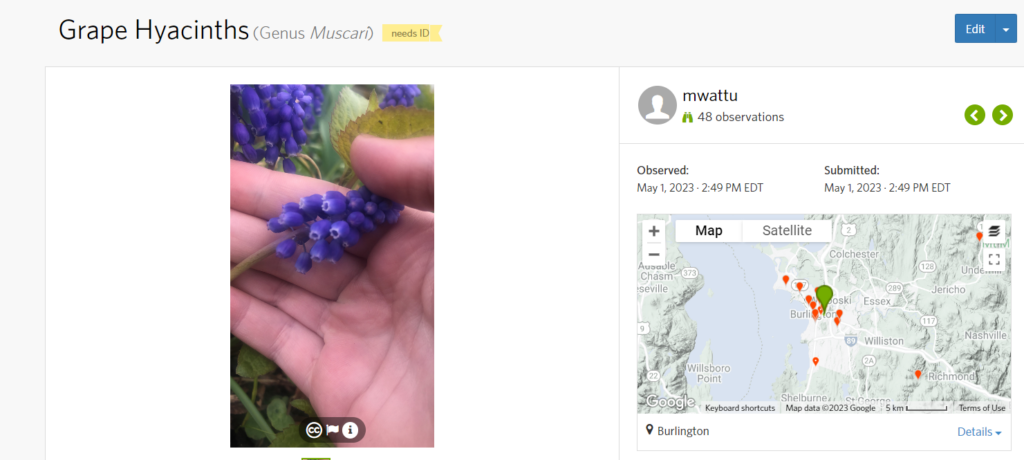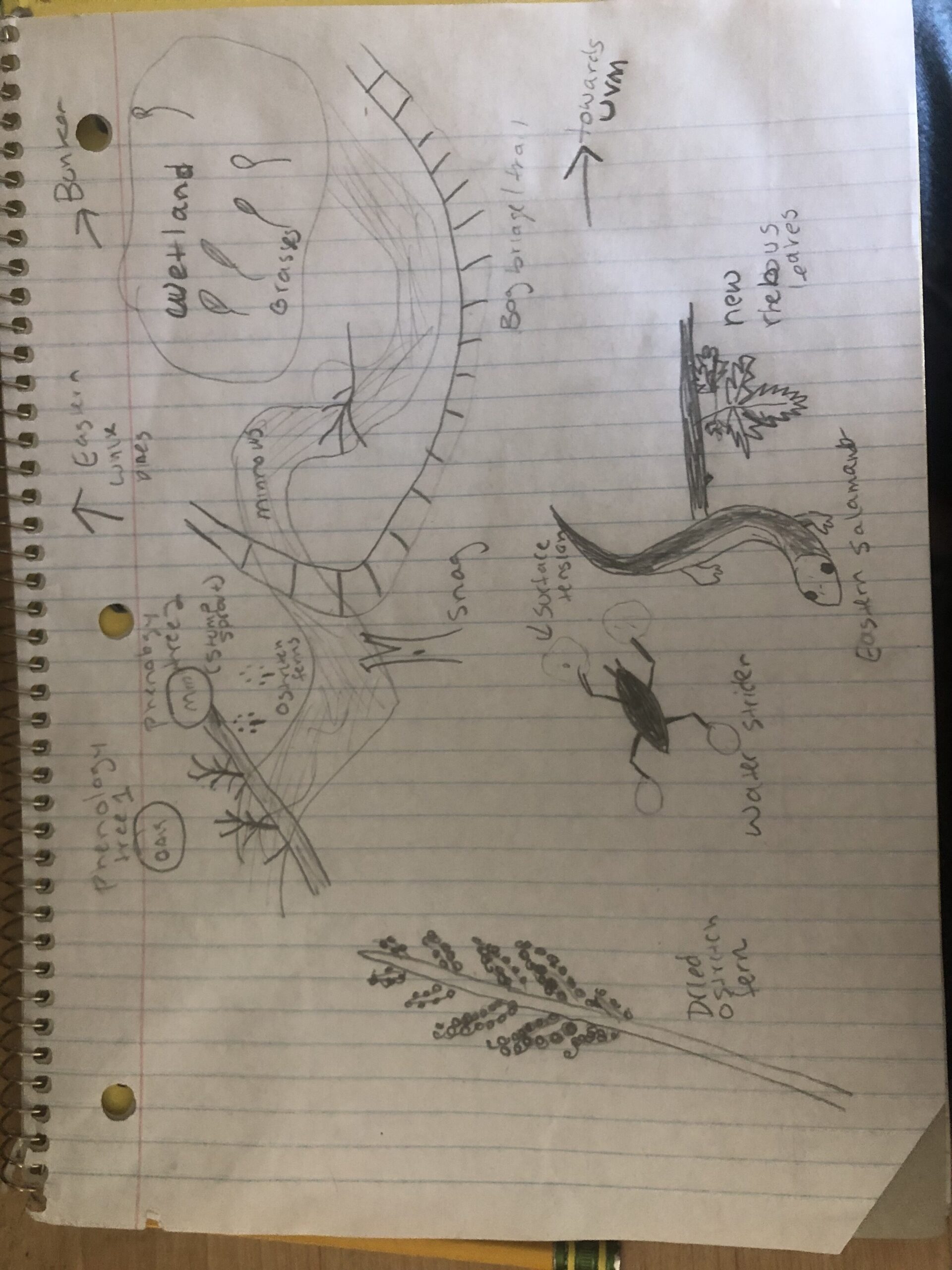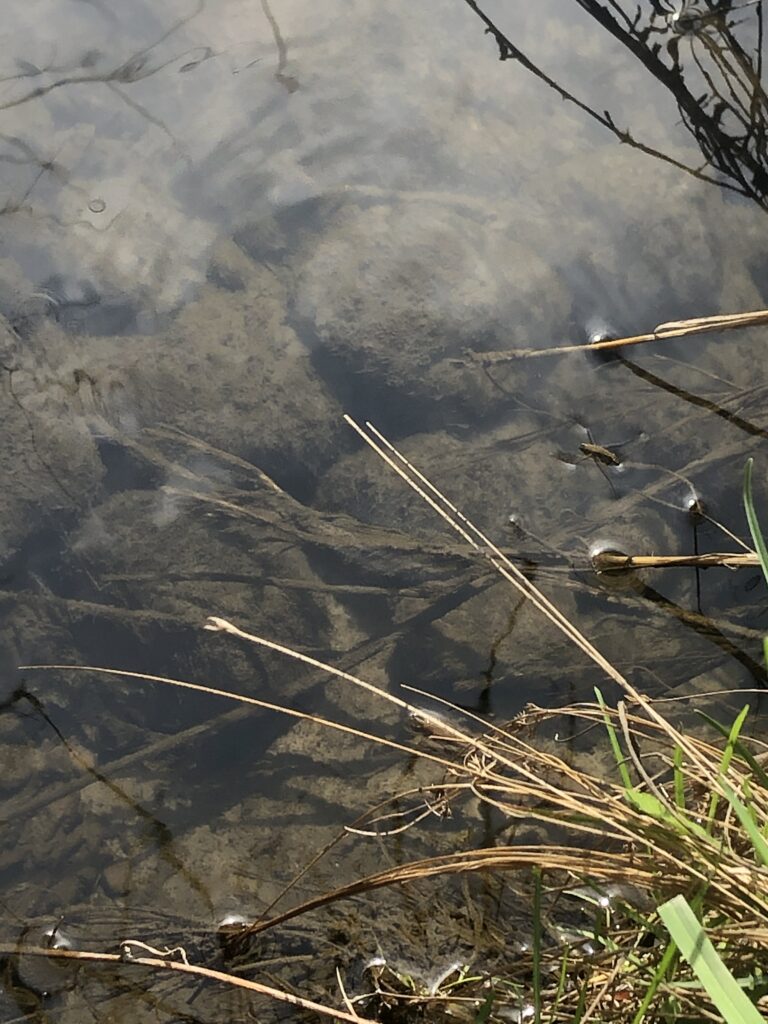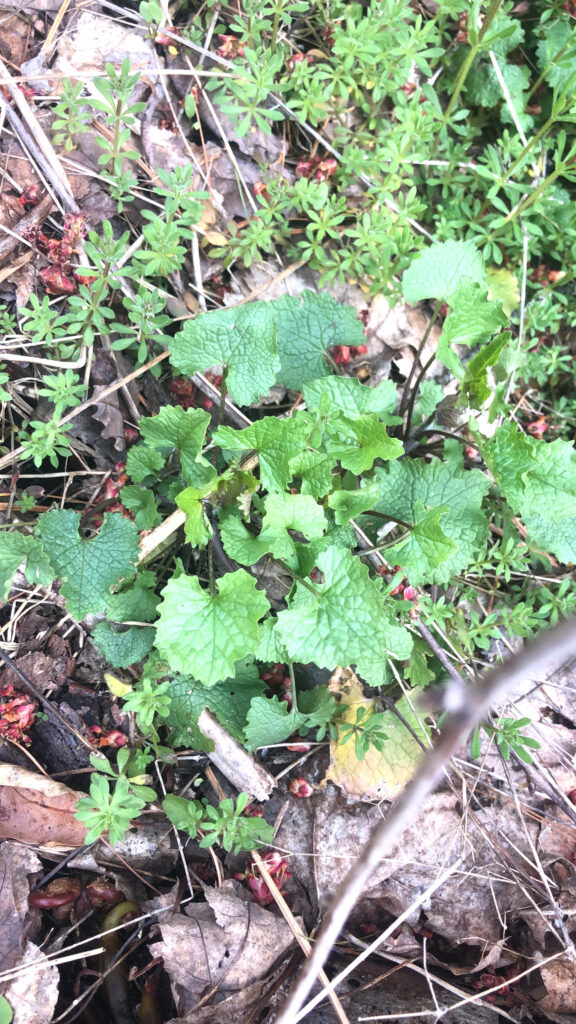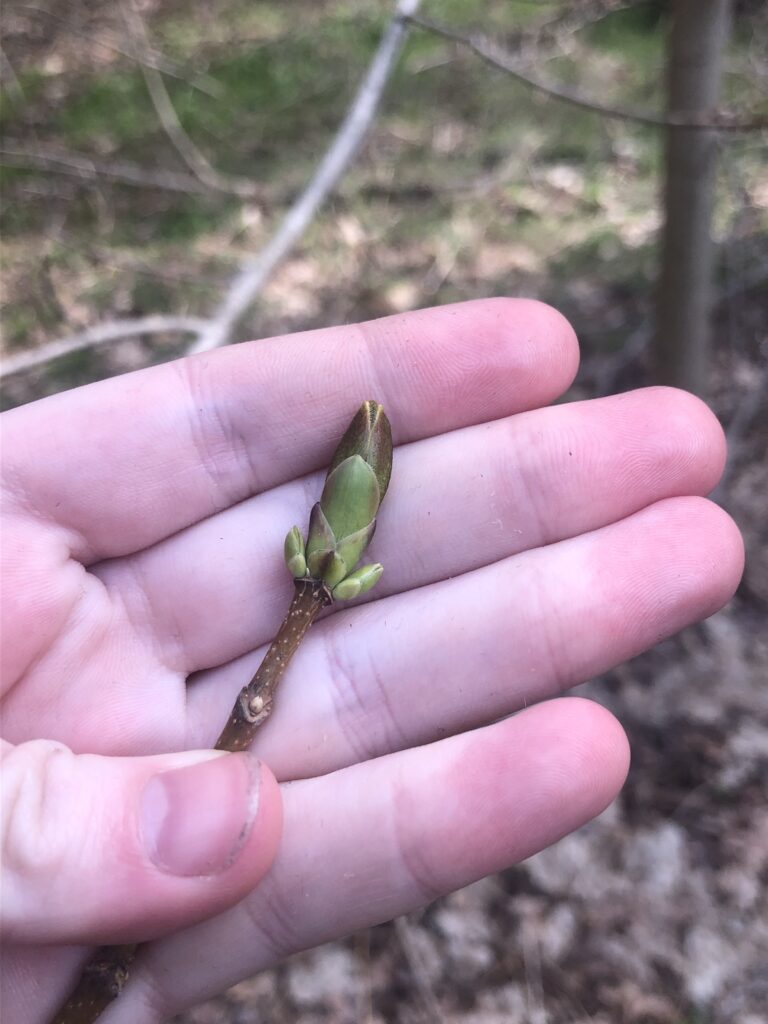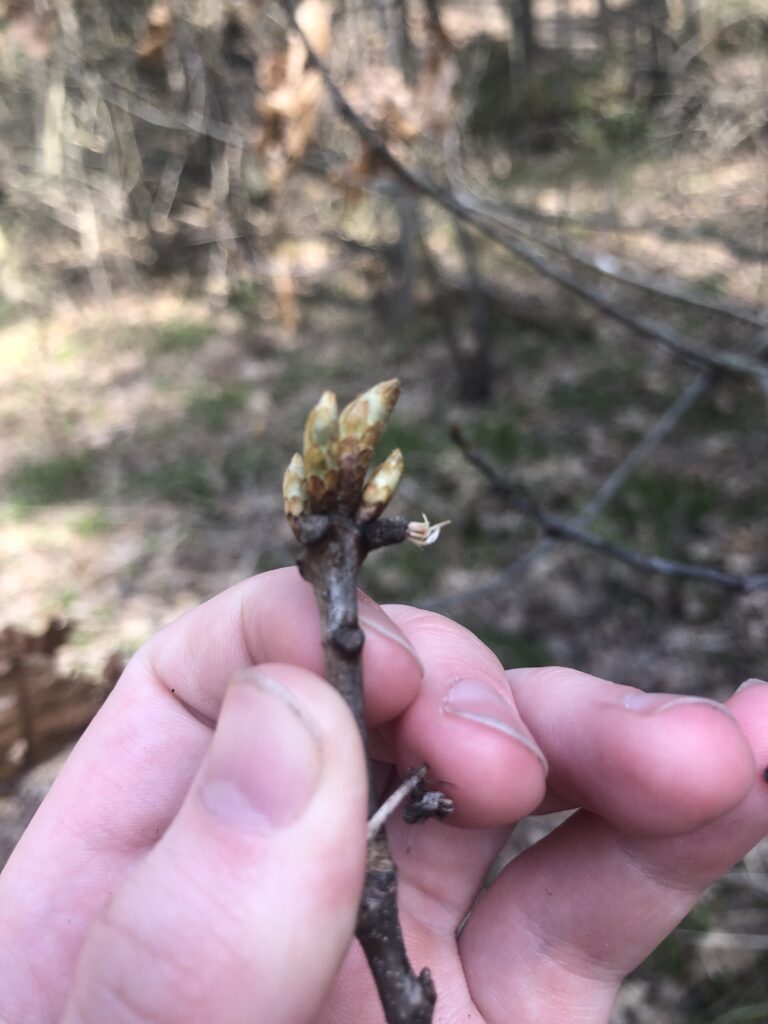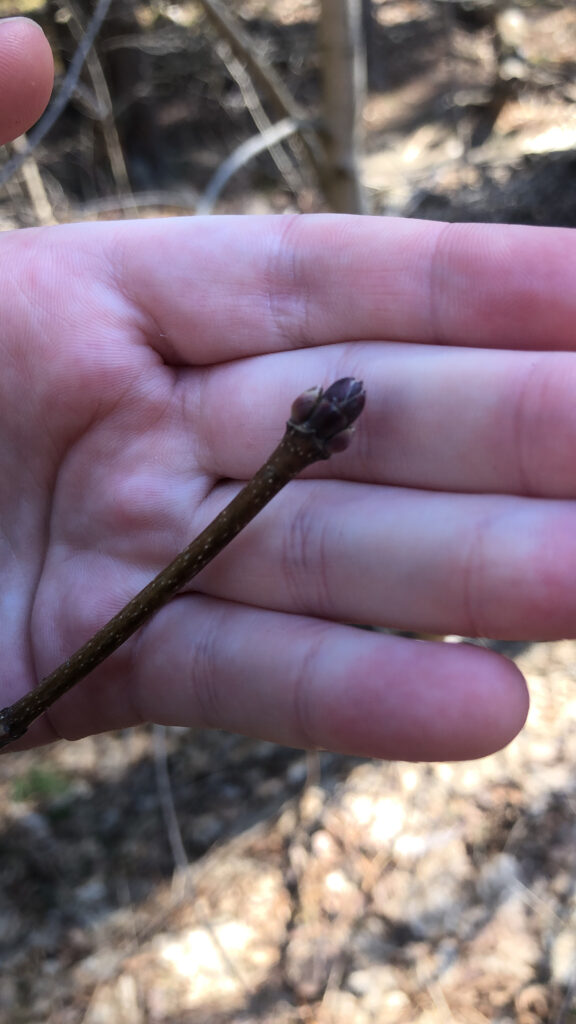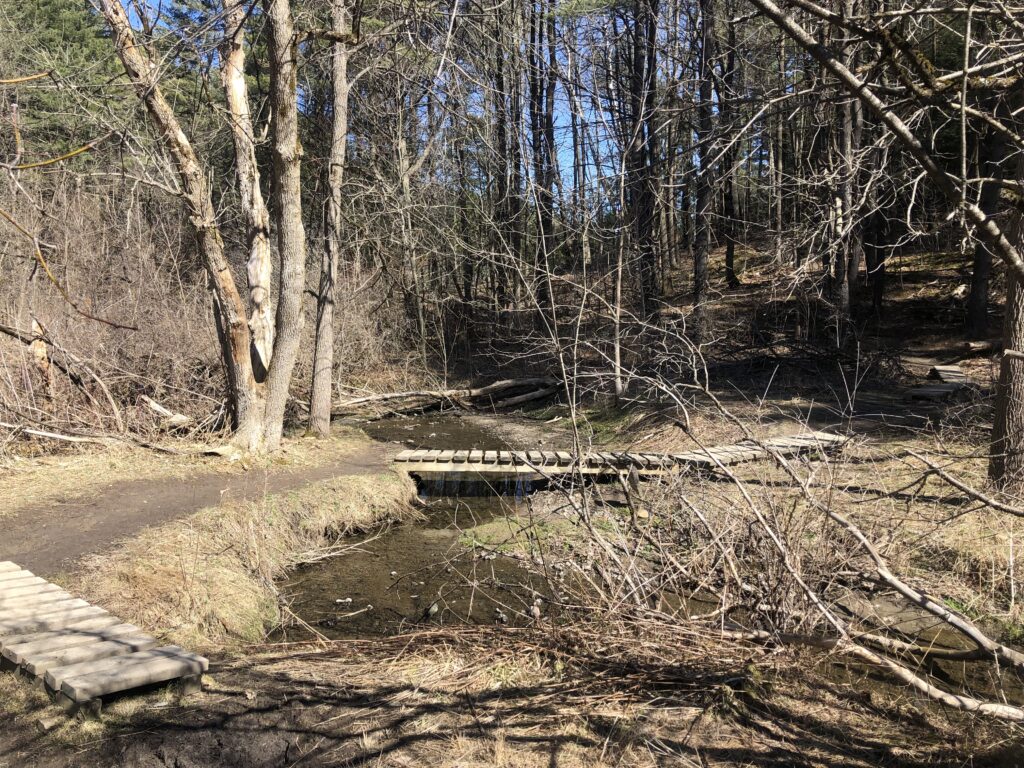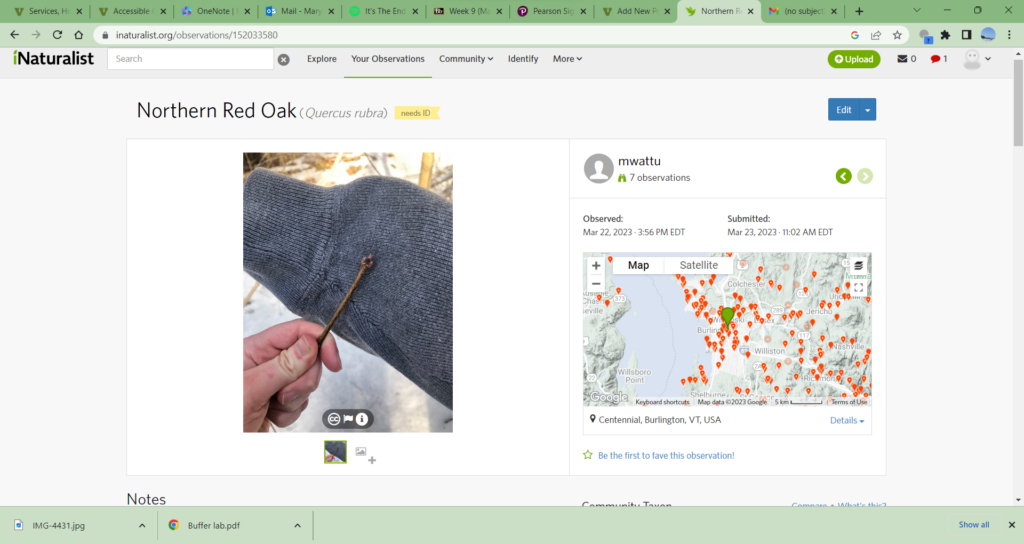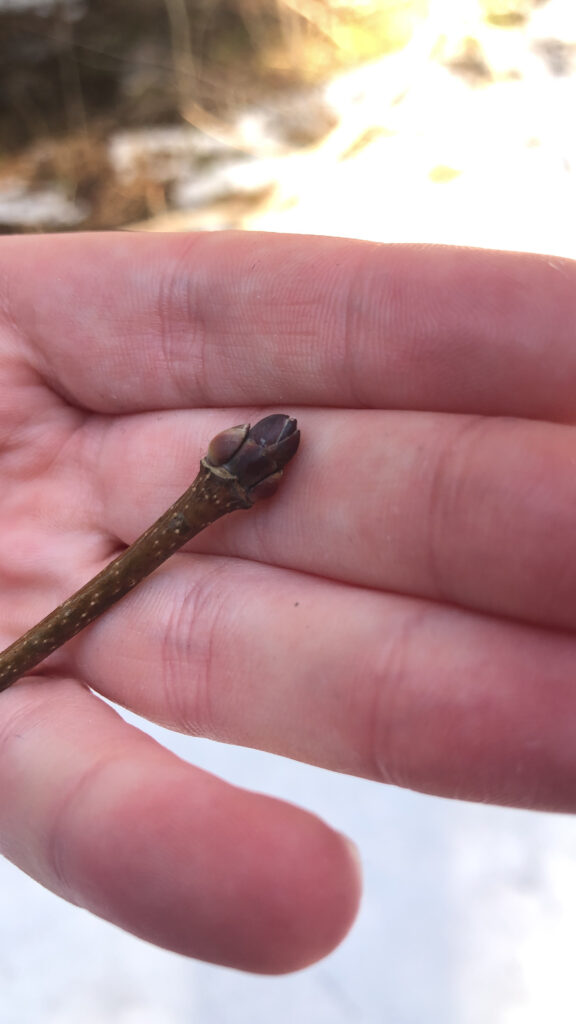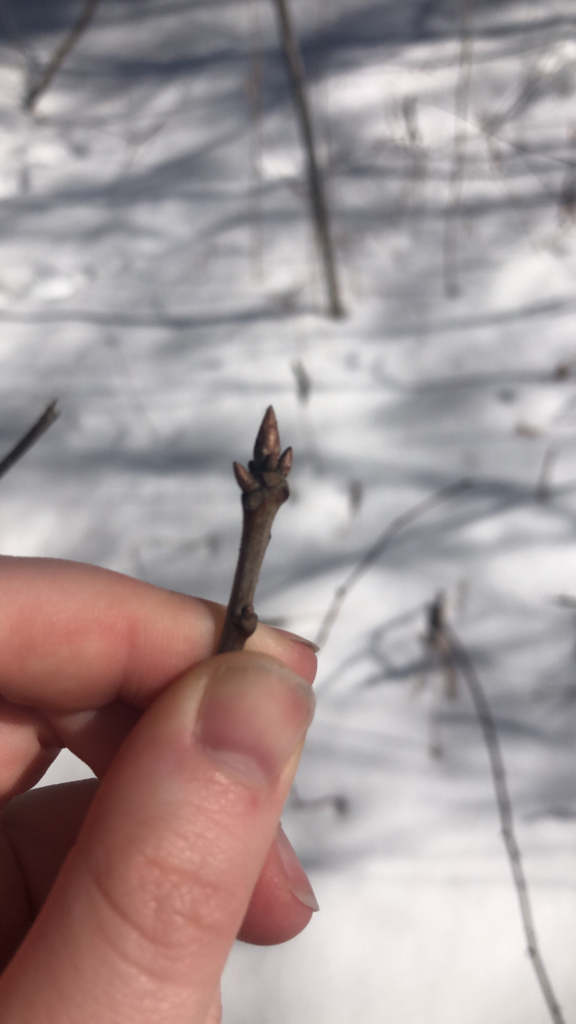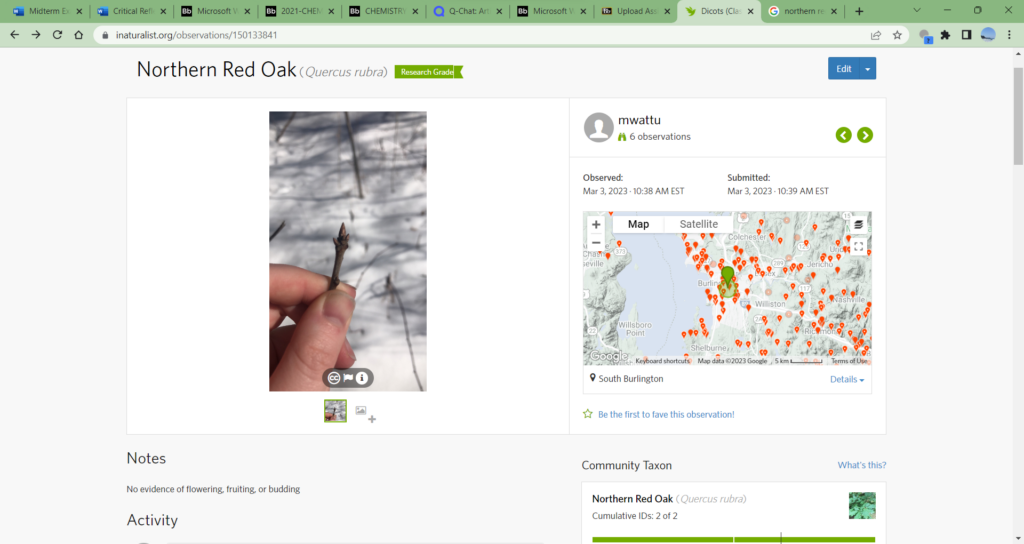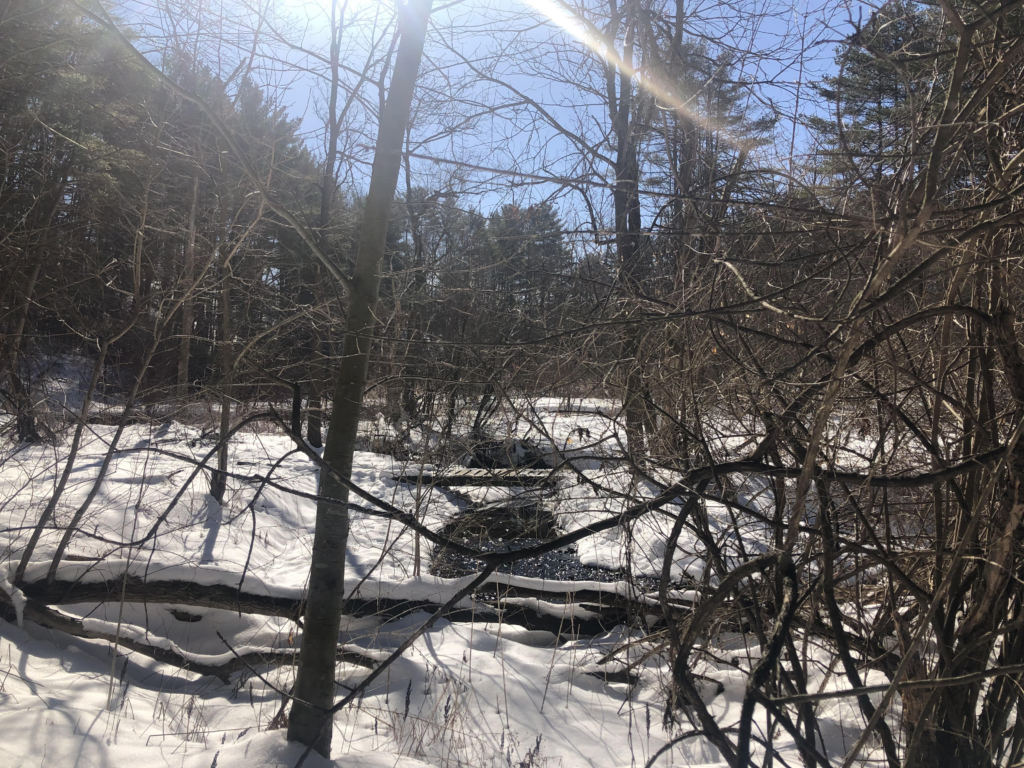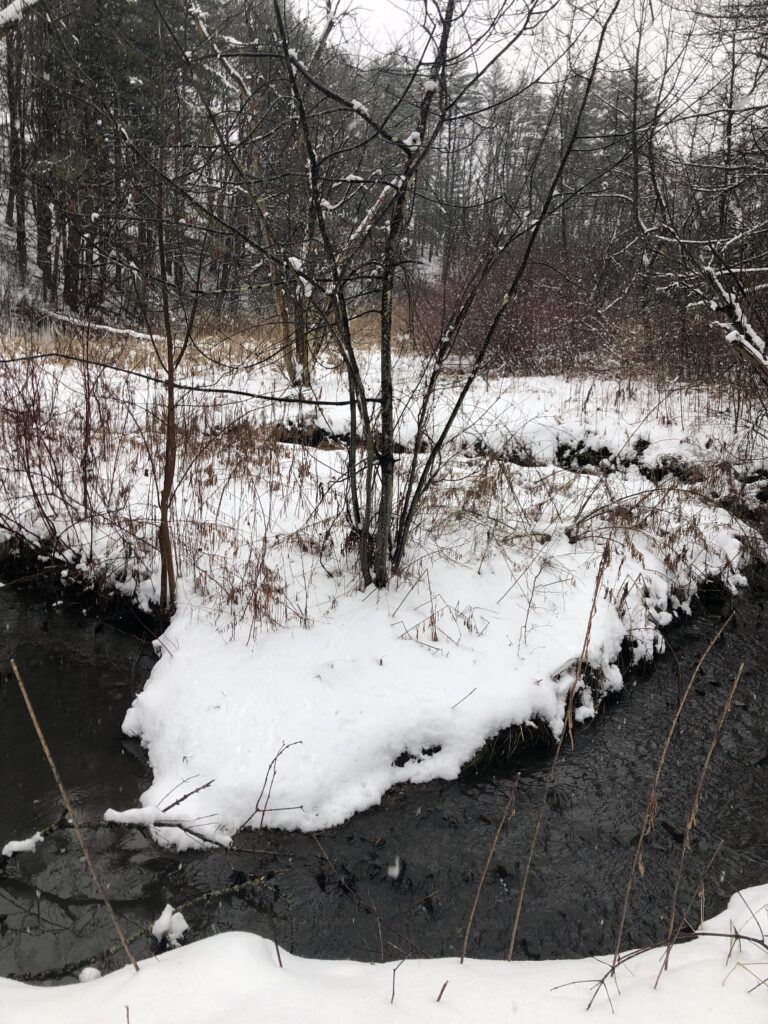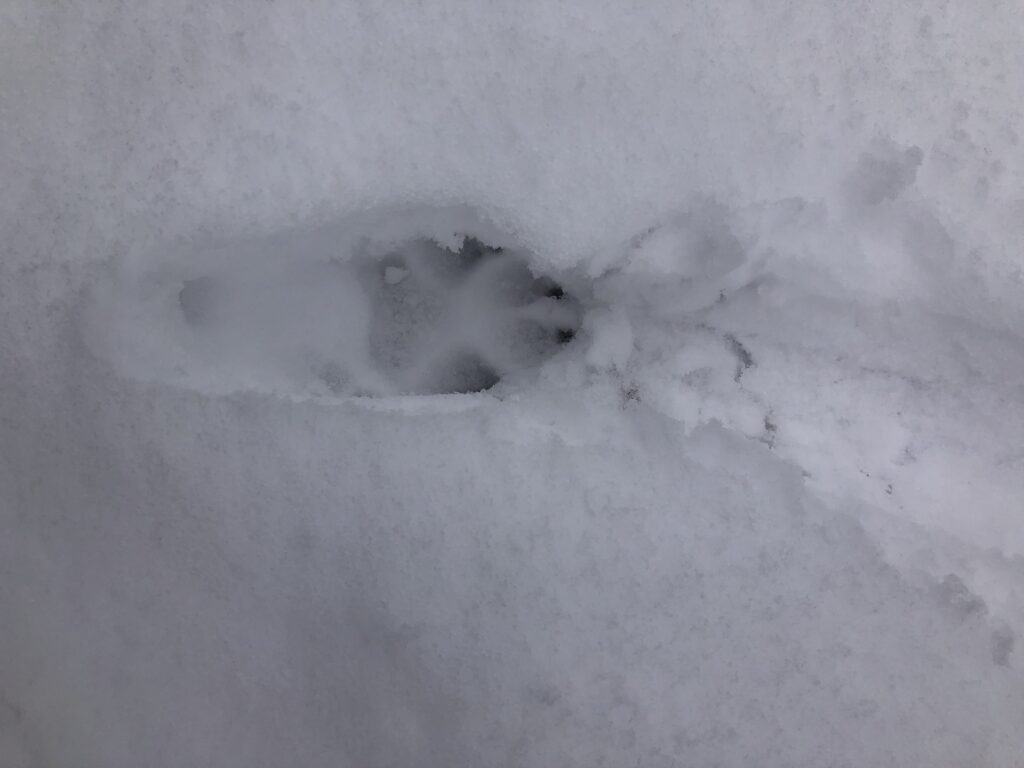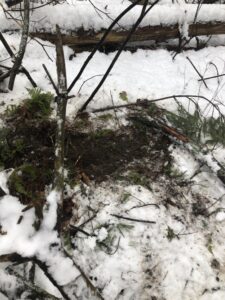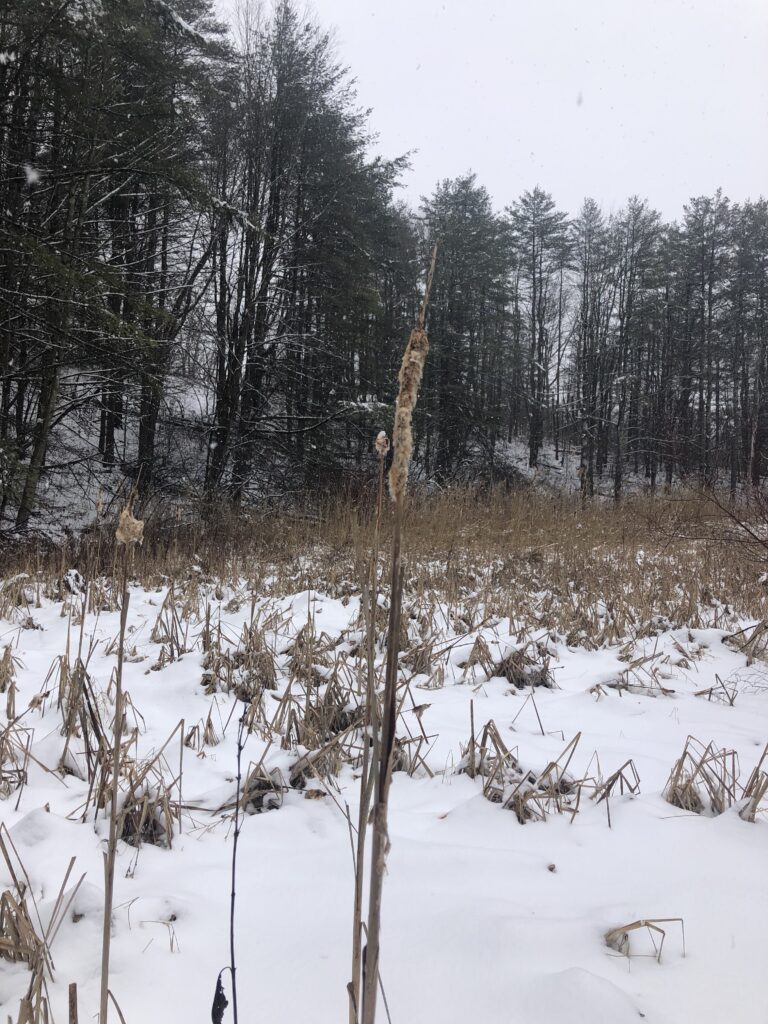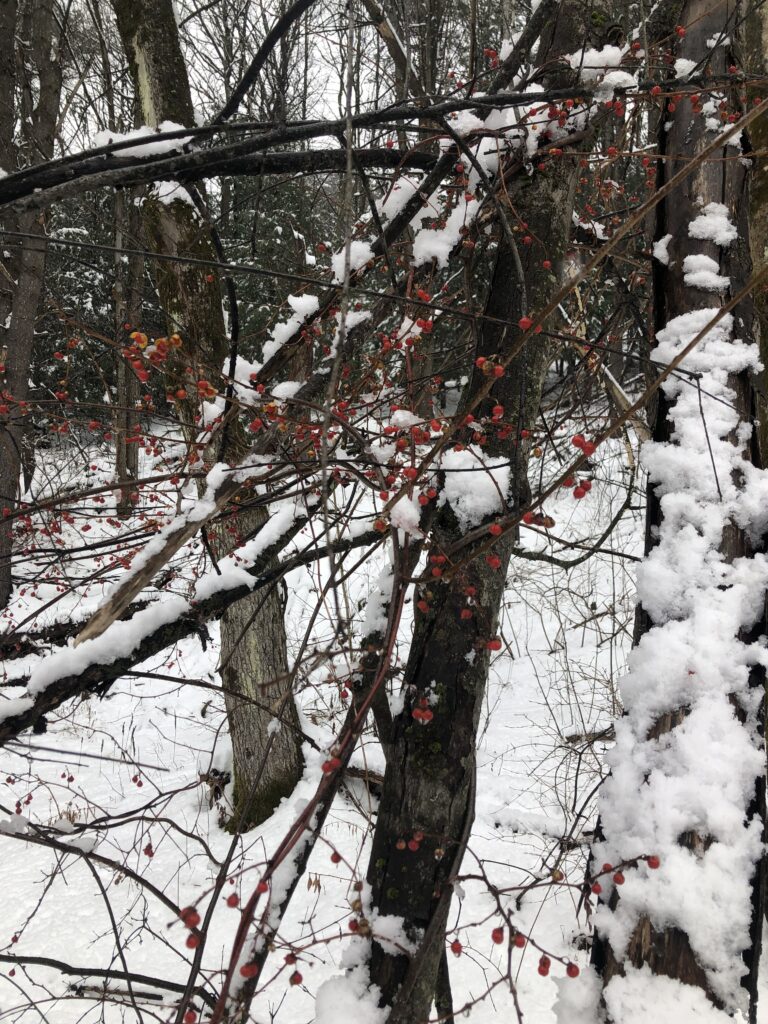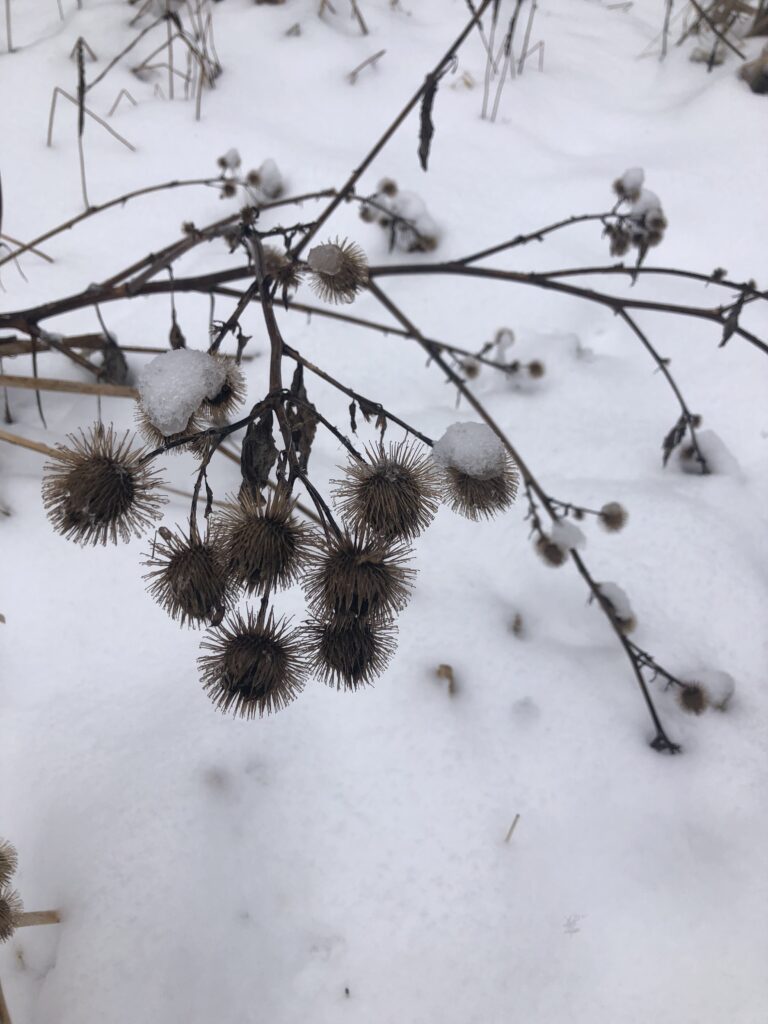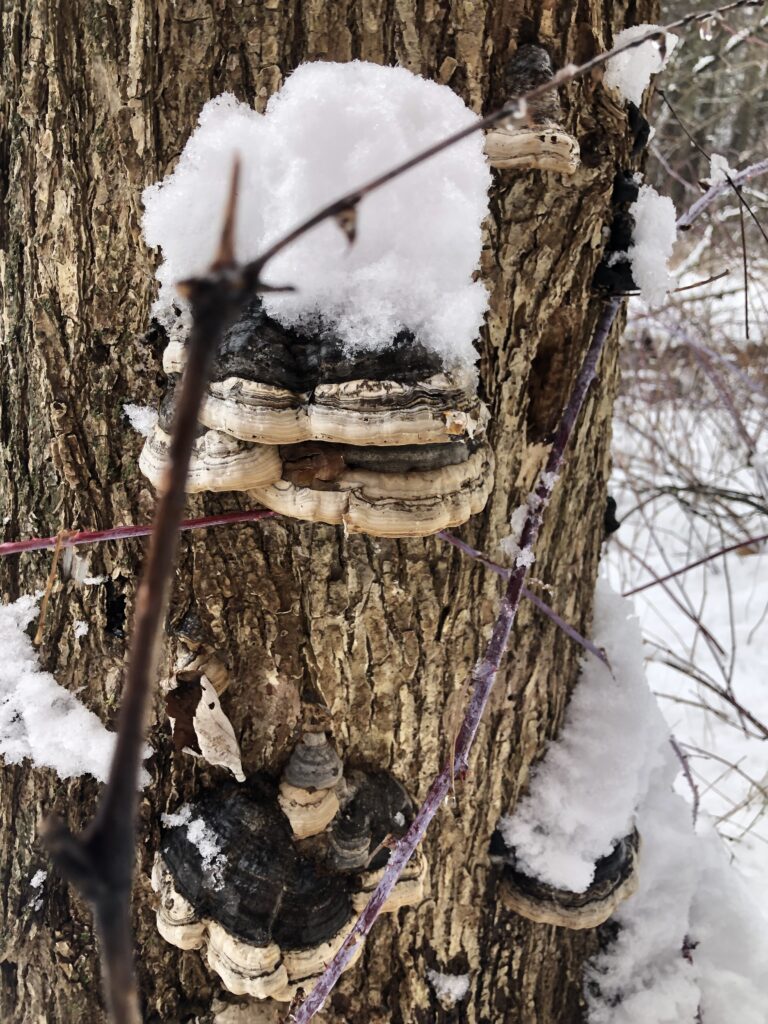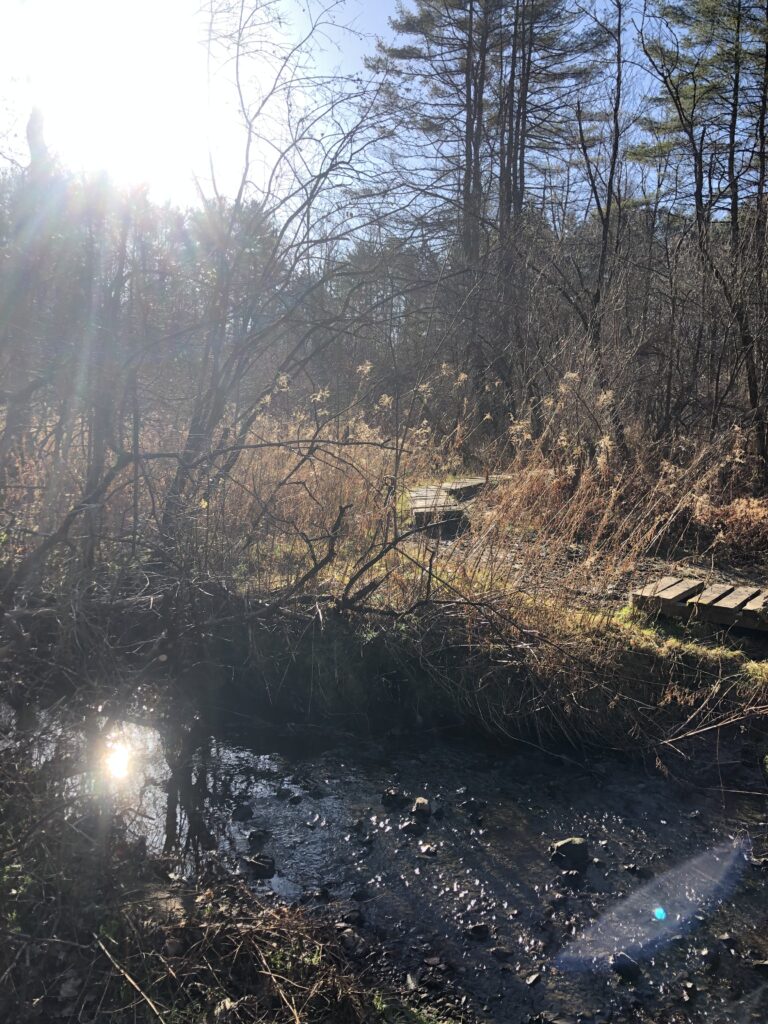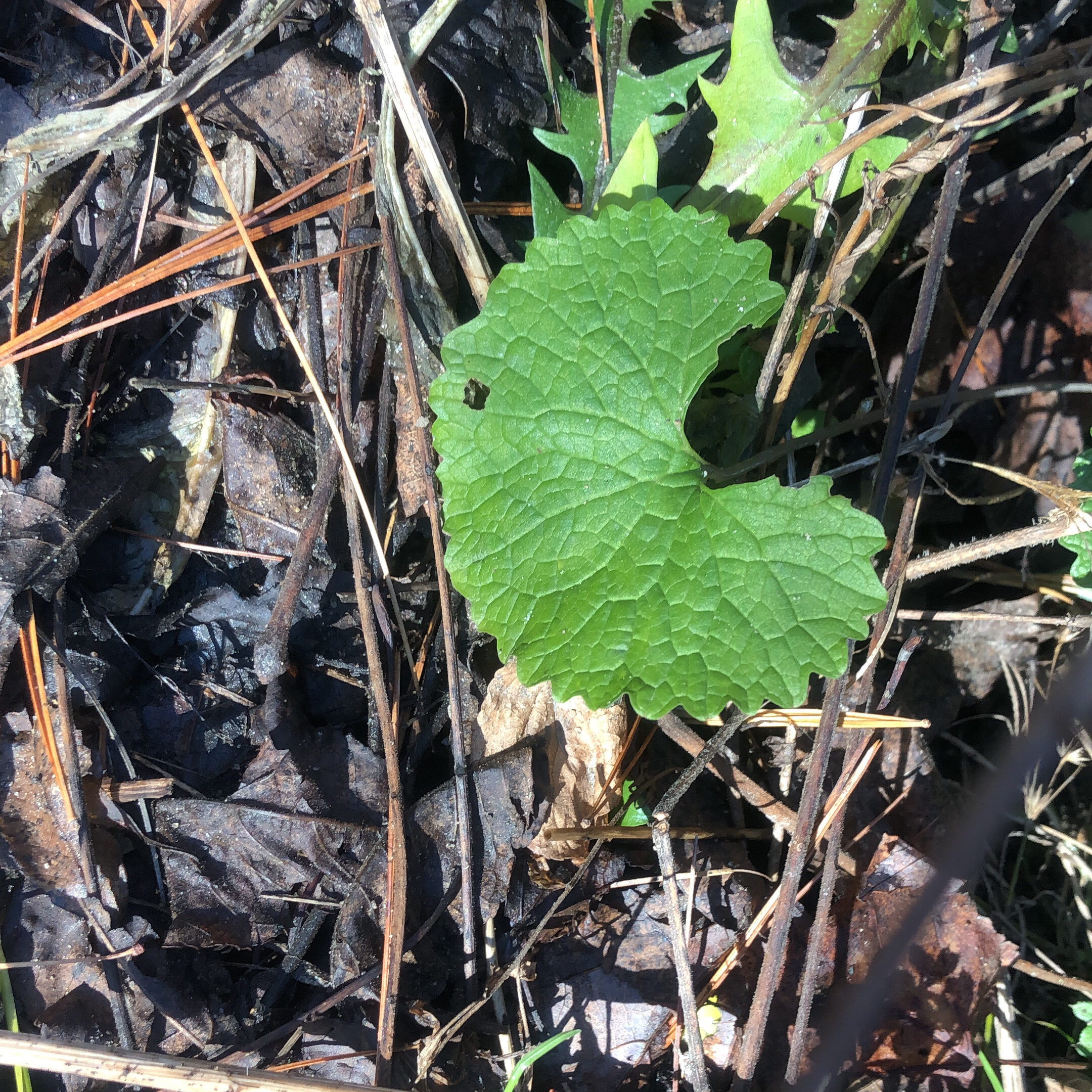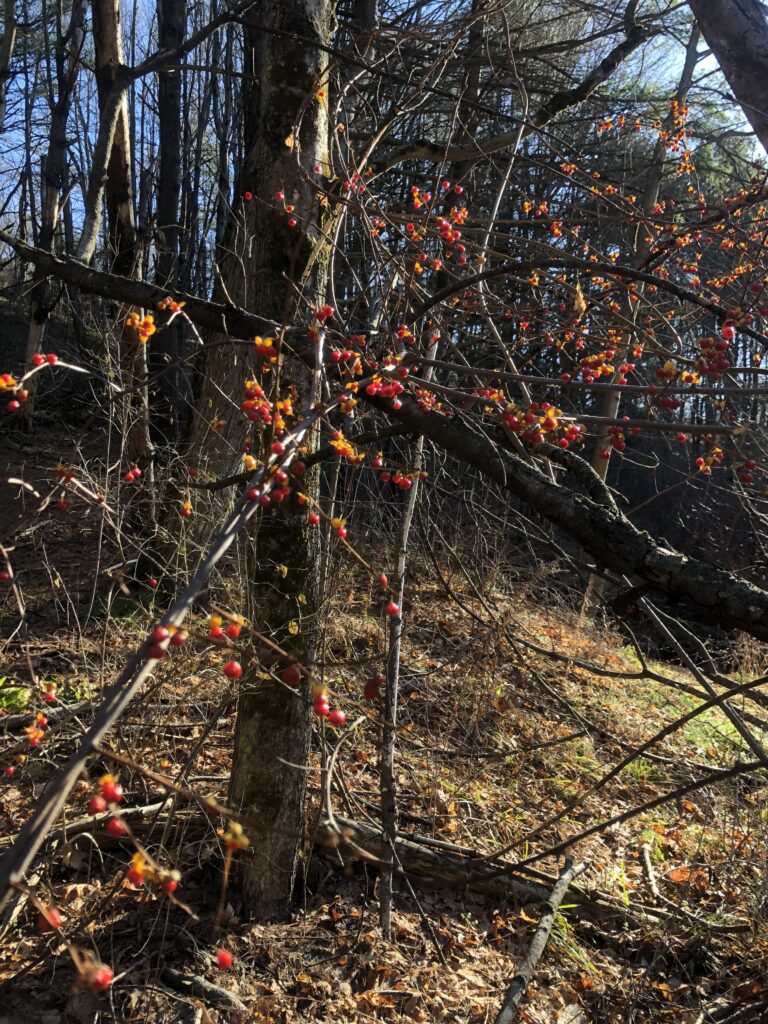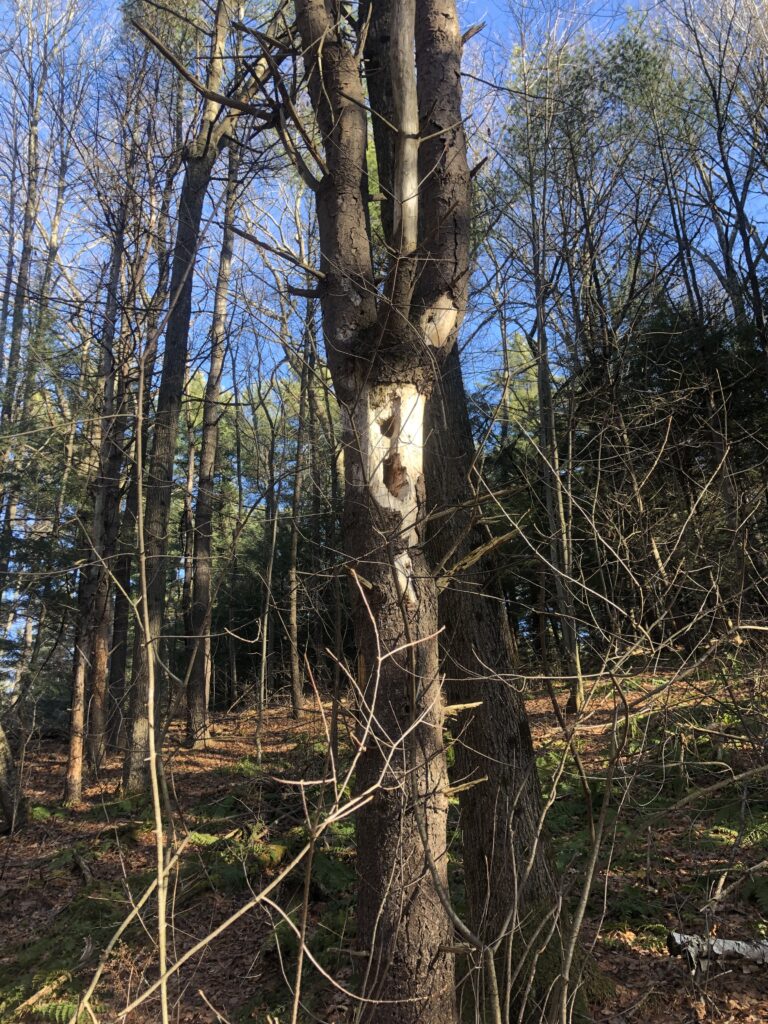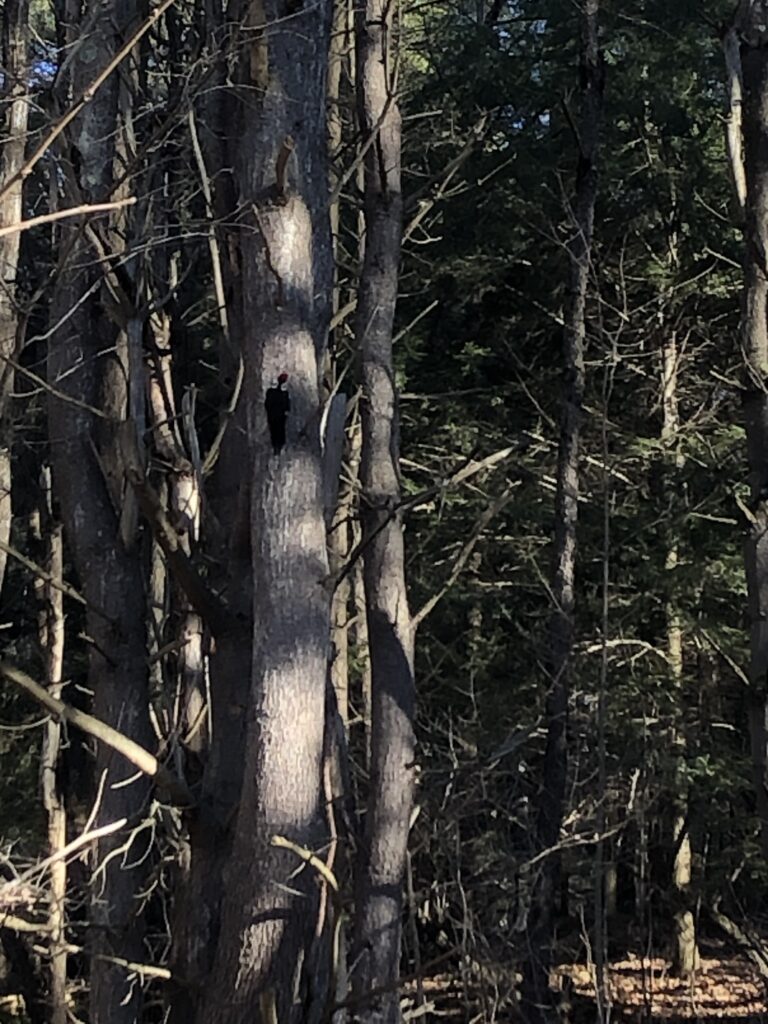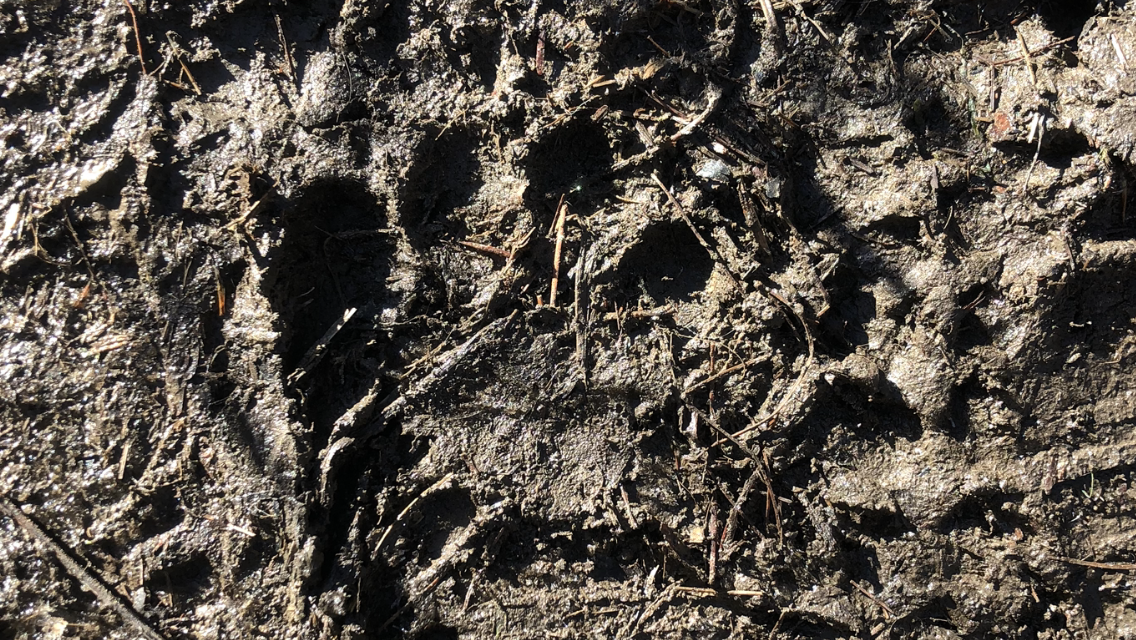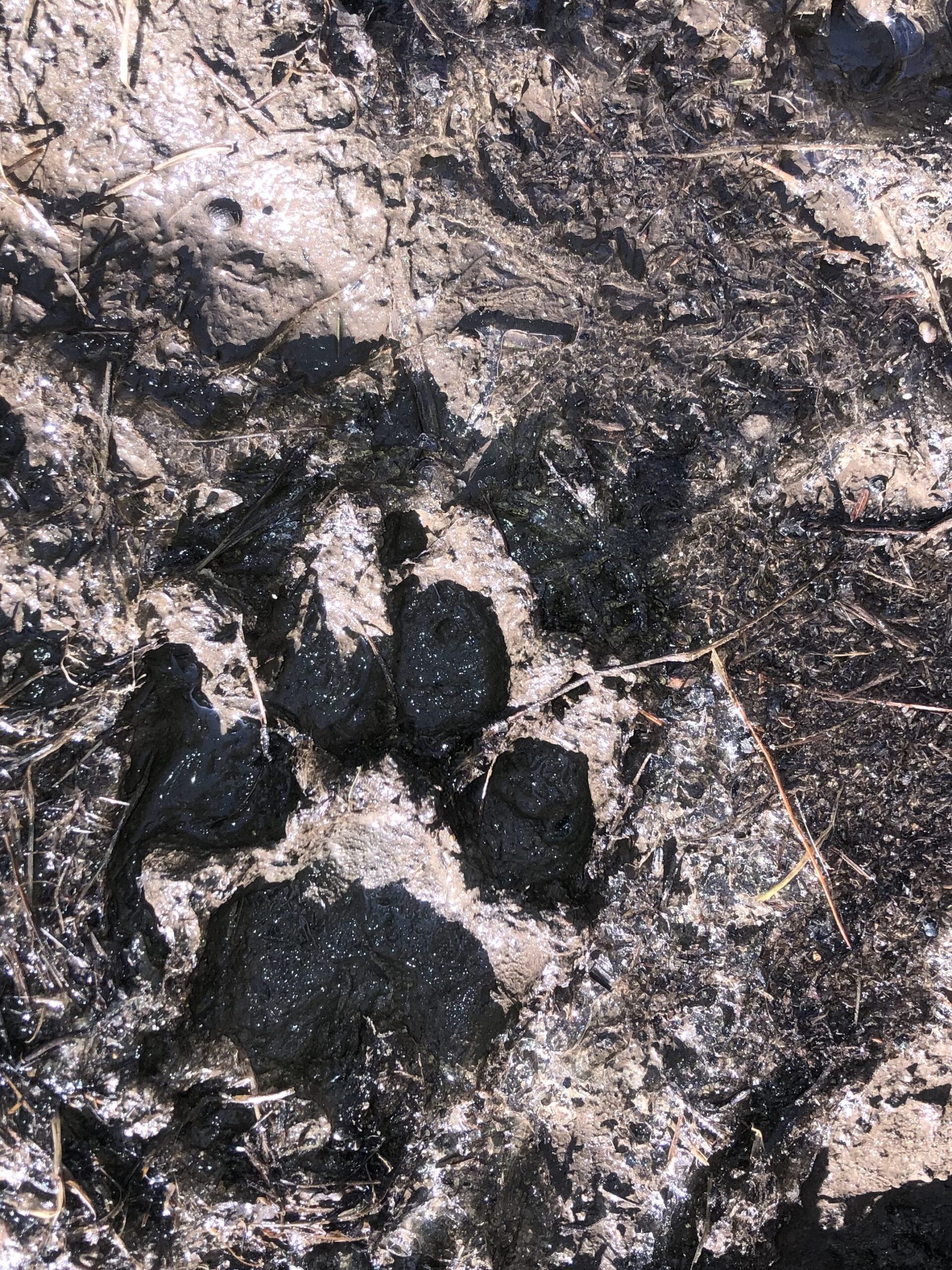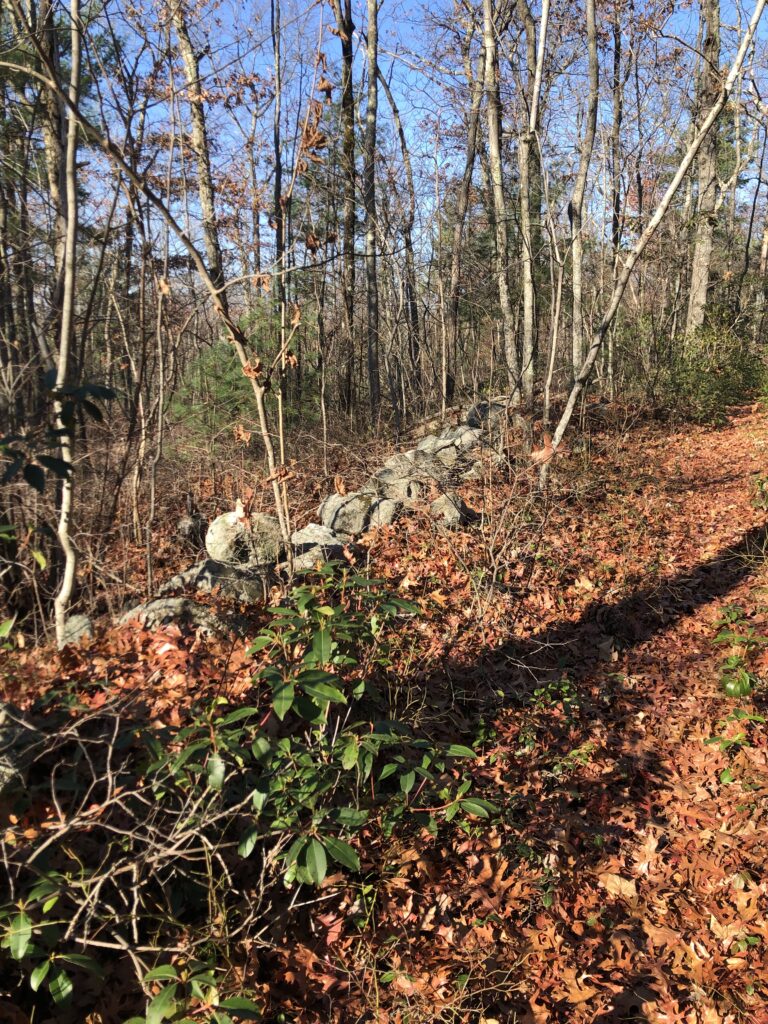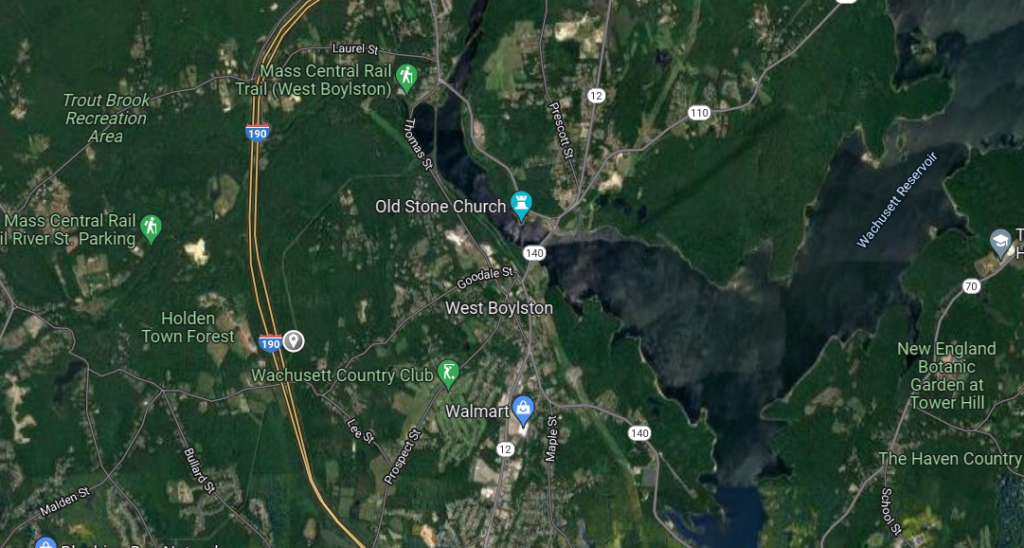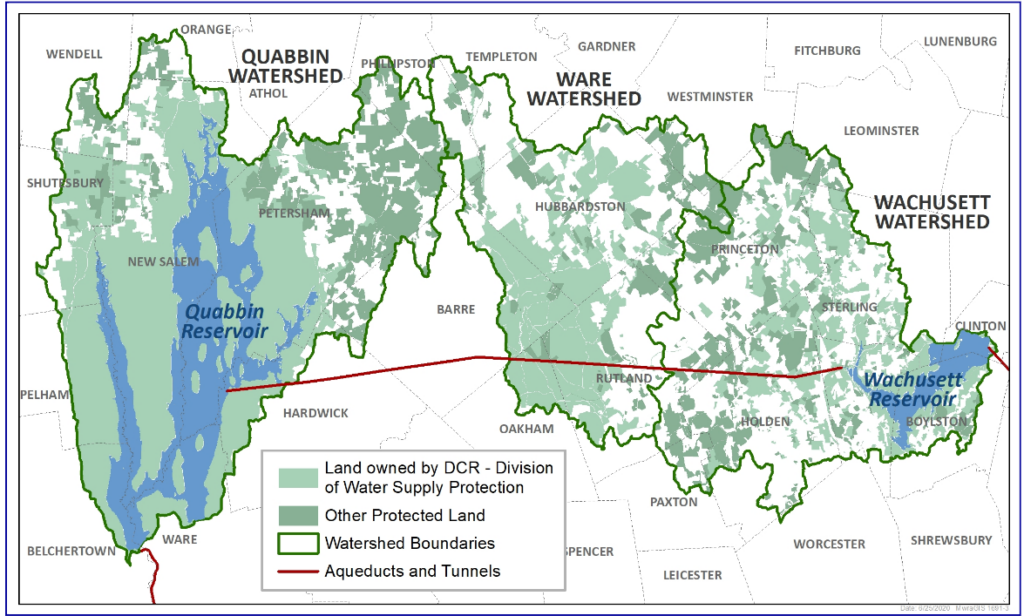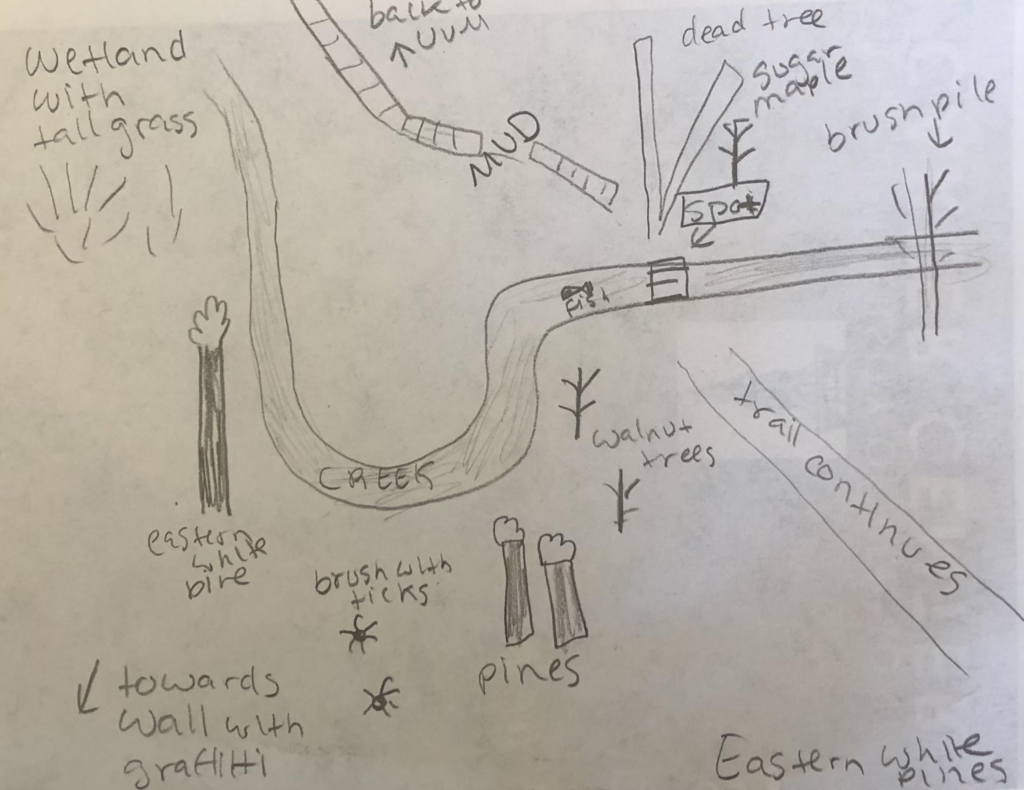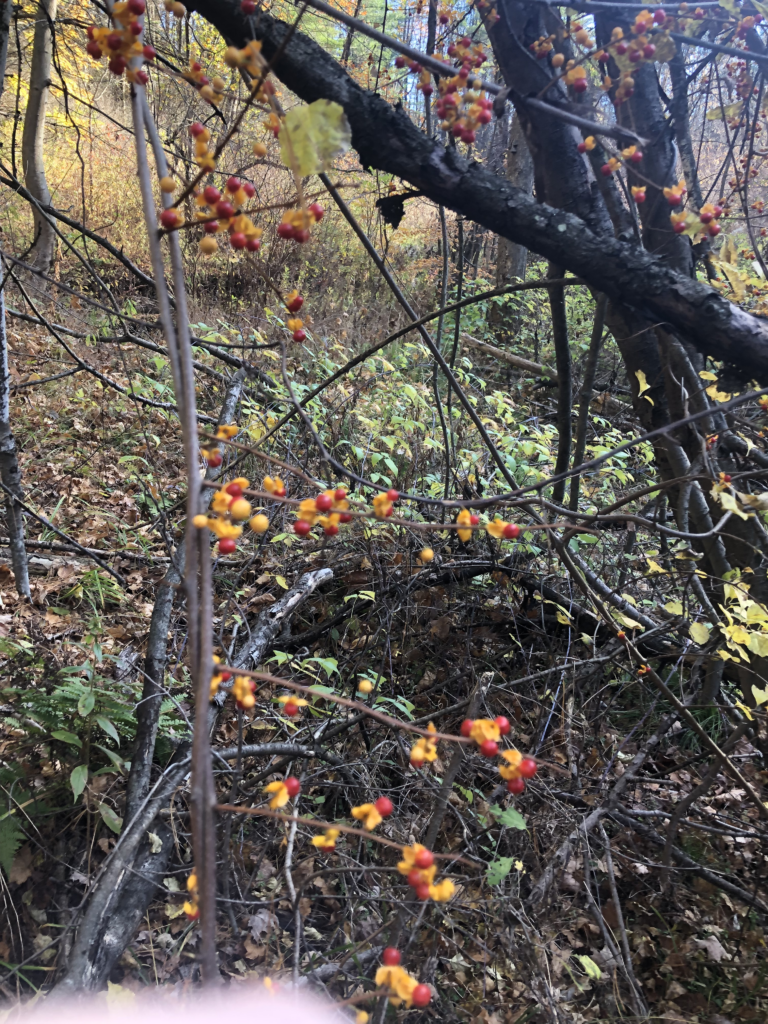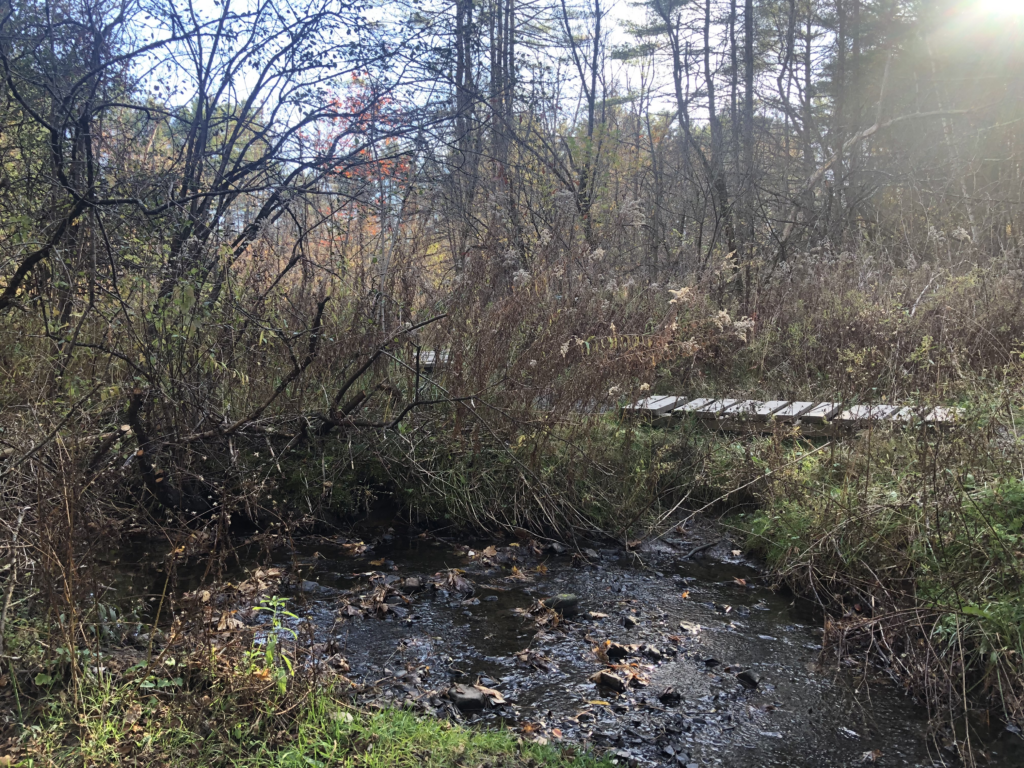

My phenology site is located in Centennial Woods Natural Area. To get there, you walk into the woods, take your first left, then continue straight at the clearing with the soil pit until you reach the bridges over the creek.
Some trees in my location are red maples, eastern white pines, norway maples, ash, barberry, and norway maples. There are also some trees that I believe are walnut trees but I am not completely certain to their identification. These trees were absolutely beautiful with their fall foliage.
Other plants around were burrs, grasses, and ferns.
I chose this spot because it has many beautiful trees around, is easily acessible, and the creek will be interesting to watch its freezing and thawing patterns as the weather changes.
My phenology site is located in Centennial Woods Natural Area. To get there, you walk into the woods, take your first left, then continue straight at the clearning with the soil pit until you reach the bridges over the creek.
Some trees in my locatoin are red maples, eastern white pines, norway maples, ash, barberry, and norway maples. There are also some trees that I believe are walnut trees but I am not completely certain to their identification. These trees were absolutely beautiful with their fall foliage.
Other plants around were burrs, grasses, and ferns.
I chose this spot because it has many beautiful trees around, is easily acessible, and the creek will be interessting to watch its freezing and thawing patterns as the weather changes.

